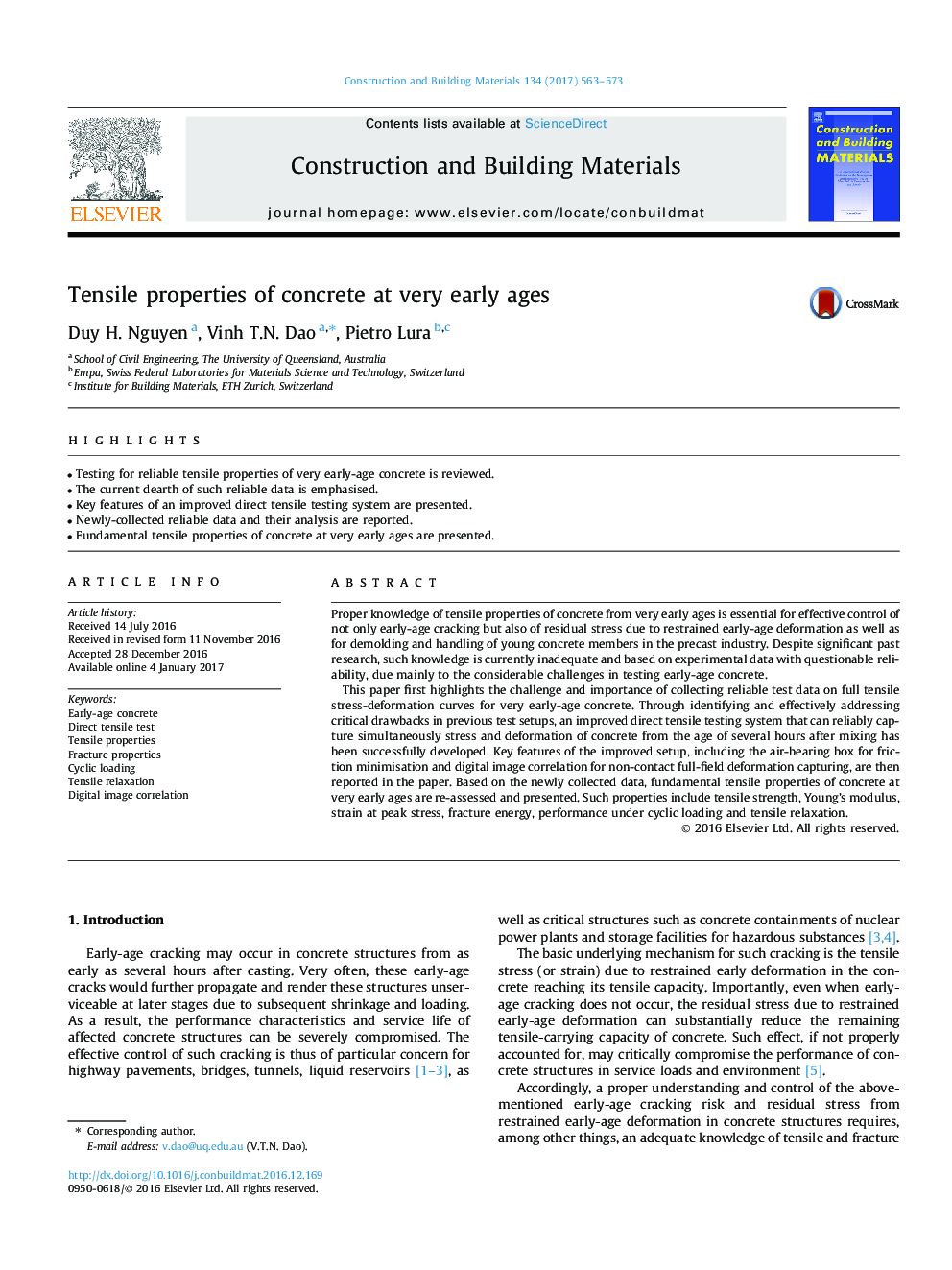| Article ID | Journal | Published Year | Pages | File Type |
|---|---|---|---|---|
| 6480891 | Construction and Building Materials | 2017 | 11 Pages |
â¢Testing for reliable tensile properties of very early-age concrete is reviewed.â¢The current dearth of such reliable data is emphasised.â¢Key features of an improved direct tensile testing system are presented.â¢Newly-collected reliable data and their analysis are reported.â¢Fundamental tensile properties of concrete at very early ages are presented.
Proper knowledge of tensile properties of concrete from very early ages is essential for effective control of not only early-age cracking but also of residual stress due to restrained early-age deformation as well as for demolding and handling of young concrete members in the precast industry. Despite significant past research, such knowledge is currently inadequate and based on experimental data with questionable reliability, due mainly to the considerable challenges in testing early-age concrete.This paper first highlights the challenge and importance of collecting reliable test data on full tensile stress-deformation curves for very early-age concrete. Through identifying and effectively addressing critical drawbacks in previous test setups, an improved direct tensile testing system that can reliably capture simultaneously stress and deformation of concrete from the age of several hours after mixing has been successfully developed. Key features of the improved setup, including the air-bearing box for friction minimisation and digital image correlation for non-contact full-field deformation capturing, are then reported in the paper. Based on the newly collected data, fundamental tensile properties of concrete at very early ages are re-assessed and presented. Such properties include tensile strength, Young's modulus, strain at peak stress, fracture energy, performance under cyclic loading and tensile relaxation.
